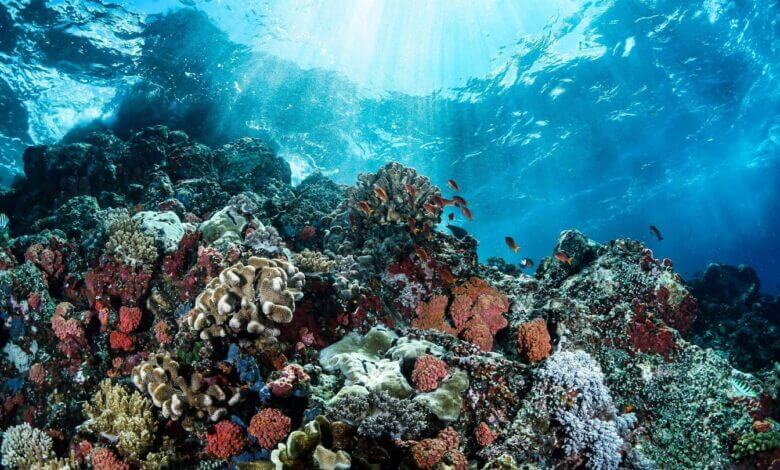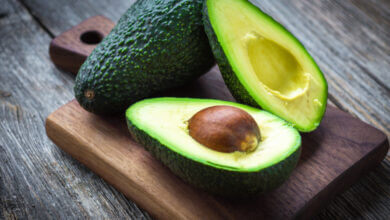Where is the Great Barrier Reef?

The Great Barrier Reef is a world-renowned natural wonder and one of the most beautiful and diverse ecosystems on the planet. It is located in the Coral Sea off the coast of Queensland, Australia. It is known as the largest coral reef system all over the world and spans over 2,300 kilometers. It is known as a home to an incredible array of marine or aquatic life. It includes over 1,500 species of jellyfish, shellfish, and fish. It also has more than 600 species of coral, and numerous other wild plants and animals.
Unfortunately, the great barrier reef is facing another significant threats from climate change, pollution, and overfishing. This mainland is also a World Heritage site, recognized for its natural beauty and outstanding universal value. In this blog, we will explore the beauty and importance of the Great Barrier Reef, as well as the challenges it faces and what can be done to protect it.
Related article:
Pneumonectomy? Quality of life What patients need to know?
The Great Barrier Reef: A Natural Wonder
One of the greatest reefs called barrier reefs is known as one of the fascinating natural wonders of this amazing globe. Furthermore, it is for good reason. It is a breathtakingly beautiful and diverse ecosystem, with stunning coral formations, crystal-clear waters, and an incredible array of marine life.
The mainland is home to more than 1,500 species of wild fish, 600 species of corals, and a vast array of other wild plants and animals, including turtles, dolphins, sharks, and whales. This coral mainland is also an important breeding ground for many species of marine life, including green sea turtles, which lay their eggs on the beaches of the reef.
Climate and Weather of the barrier reef:
The location of this beautiful region in tropical waters means that the climate is warm and humid year-round. The ideal temperatures are making it an ideal destination for visitors seeking sun, sand, and sea. The variety of weather conditions also makes the tourist experience much more convenient for them. The weather averages from 24-27 Celsius degrees. The average humidity is high during the summer and lower in the winter, making it perfect for swimming and beach-going.
Related article:
What is Scentsy? Is Scentsy Toxic?
Access and Transportation:
There are several entry points to the Great Barrier Reef, including Cairns, Townsville, and Airlie Beach. Visitors can access the mainland via boat, plane, or helicopter, with tours departing regularly from these locations. The coral mainland is also home to several island resorts, providing visitors with a unique opportunity to stay in the heart of the mainland.
Threats to the Great Barrier Reef
Despite its beauty and importance, this mainland is facing a range of threats. Climate change is one of the most significant. It can raise ocean temperatures. It can also raise the ocean acidification.
Furthermore, it can cause events of mass coral bleaching and damage the reef’s delicate ecosystem. Pollution is also a major threat, with agricultural runoff, plastic waste, and other pollutants harming this beauty’s water quality and contributing to the spread of crown-of-thorns starfish, which feed on coral.
Related article:
What is the Economics System in the United States
Overfishing is another threat, as it can disrupt the balance of the mainland’s ecosystem and reduce the number of species that rely on the reef for their survival. Coastal development and dredging can also harm the mainland by increasing sedimentation and reducing the amount of sunlight that reaches the corals.
Invasive species and disease can also pose a risk, as they can compete with native species and spread rapidly throughout the reef. To protect the great barrier mainland, it is crucial to address these threats through sustainable practices and conservation efforts. The government of Australia can also take some actions here regarding the protection of natural beauty and ecosystem.
Protecting the Great Barrier Reef
Efforts to protect the mainland have been ongoing for decades, with a focus on sustainable tourism, conservation, and scientific research. The Australian government has implemented several initiatives to protect the mainland. It may include the marine park authority of this barrier reef. It is also helping to manage the aquatic or marine park and works to promote sustainable practices.
Related article:
What is Astronomy | A Complete Guide
The government has also invested in scientific research to better understand the threats facing the reef and develop strategies to mitigate them. This includes research on coral resilience, the negative impact of changes in climate, and the negative effects of pollutants and other stressors on the coral land.
There are also many non-governmental organizations and conservation groups working to protect the mainland. These organizations work to raise awareness about the threats facing the cay, promote sustainable practices, and advocate for stronger protections.
Collaboration with Communities
Efforts to protect the Great Barrier Reef have also involved collaborations with Indigenous communities who have a long-standing relationship with the mainland and its surrounding waters. These partnerships recognize the importance of traditional ecological knowledge in conservation efforts and have led to the development of Indigenous Protected Areas and joint management arrangements.
In addition to these efforts, there has been a growing focus on reducing the impact of climate change on the mainland. The Great Barrier Reef Foundation, a non-profit organization, has been at the forefront of these efforts, funding research and projects aimed at building the mainland’s resilience to climate change.
Related article:
What Personal Injury Lawyers do? Everything you need to know
Despite these efforts, the great barrier reef still confronts numerous challenges. These may include coral bleaching, ocean acidification, and pollution. Continued collaboration and innovation will be necessary to make sure the survival and long-term health of this beautiful and iconic ecosystem.
Indigenous Connections to the Greater Barrier Reef
Indigenous peoples always have a deep connection to the great barrier reef. It is because it stretches back tens of thousands of years. The mainland is an important part of the cultural heritage and identity of many Indigenous communities, who have relied on its resources for sustenance, medicine, and spiritual practices.
This mainland is home to numerous Indigenous groups, including the Torres Strait Islanders and the Aboriginal people of the east coast of Australia. For many of these communities, the reef is seen as a living entity with its own unique spirit and significance. Traditional ecological knowledge is an essential part of Indigenous culture and is passed down from generation to generation, providing valuable insights into the management and conservation of the corals.
Related article:
Beyond borders | The lifesaving work of Doctors Without Borders
Indigenous communities have played a significant role in efforts to protect the Great Barrier Reef. Collaborative partnerships between Indigenous groups and government agencies have resulted in the establishment of Indigenous Protected Areas and joint management arrangements, which recognize the cultural significance of the mainland and aim to protect its ecological values.
Overall, the connection between Indigenous communities and the Great Barrier Reef is an important aspect of its history, culture, and conservation. By working together to preserve this iconic ecosystem, we can ensure its continued health and vitality for generations to come.
Final Verdict!
In conclusion, the Great Barrier Reef is an incredible natural wonder that has captured the imagination of people around the world. Its beauty and diversity have made it a popular destination for tourists, scientists, and conservationists alike. While the location of the mainland is important, what is truly remarkable about it is the way it has captured the hearts and minds of so many people.
From its unique and delicate ecosystem to its cultural significance for Indigenous communities, this mainland is a truly special place. By continuing to work together and invest in its conservation, we can ensure that this magnificent ecosystem will continue to inspire and captivate us for years to come.






